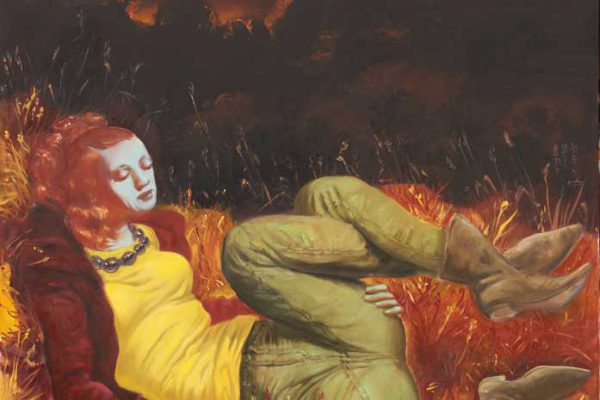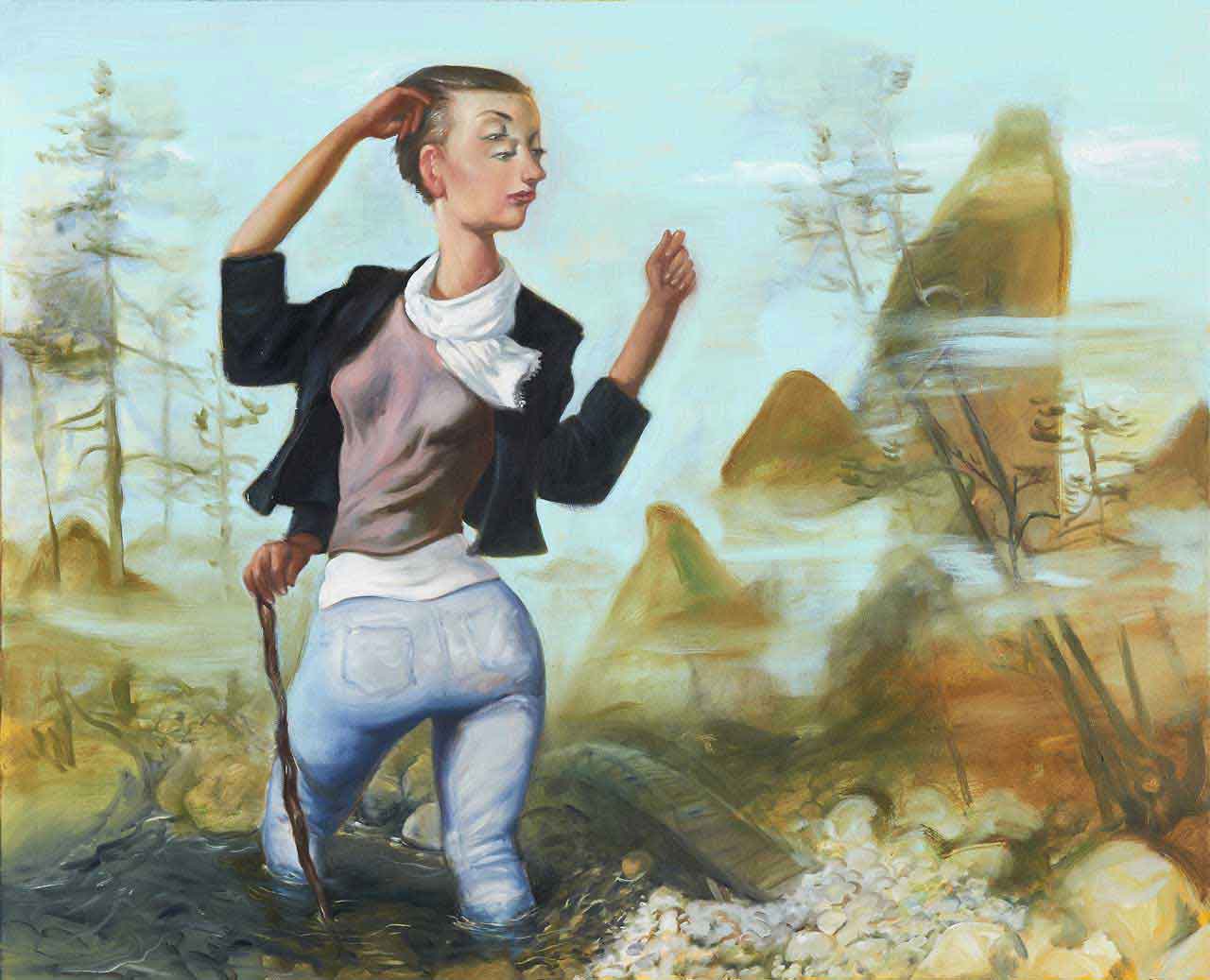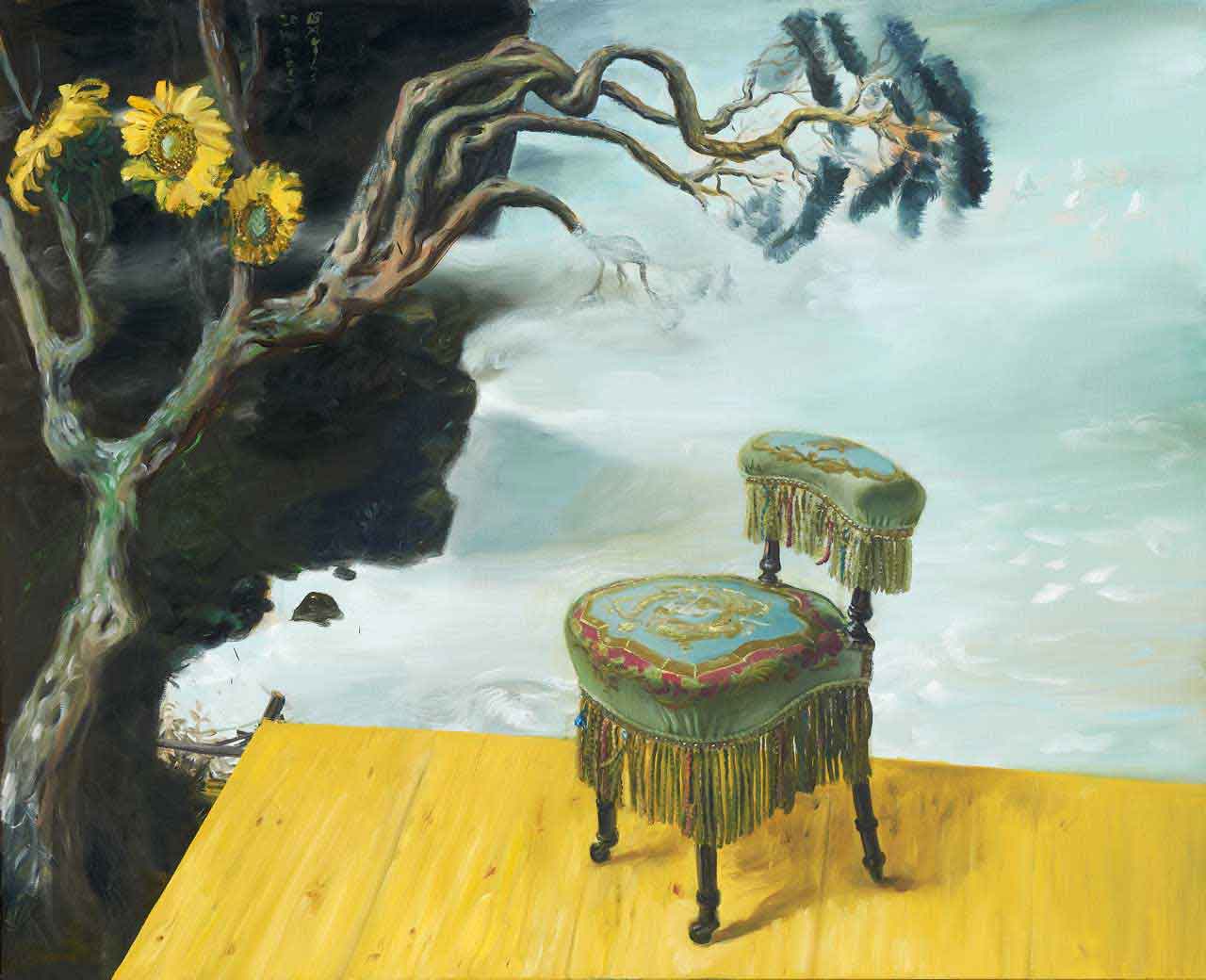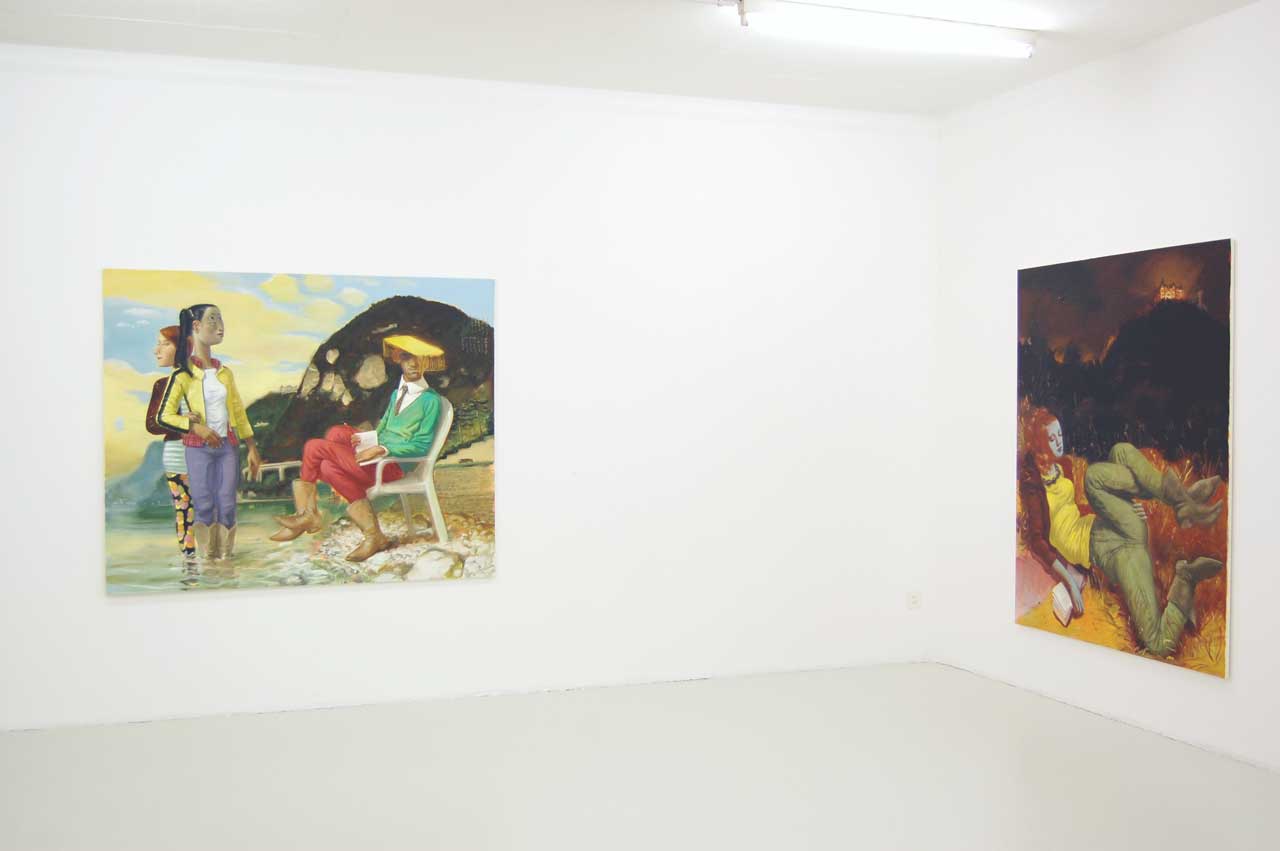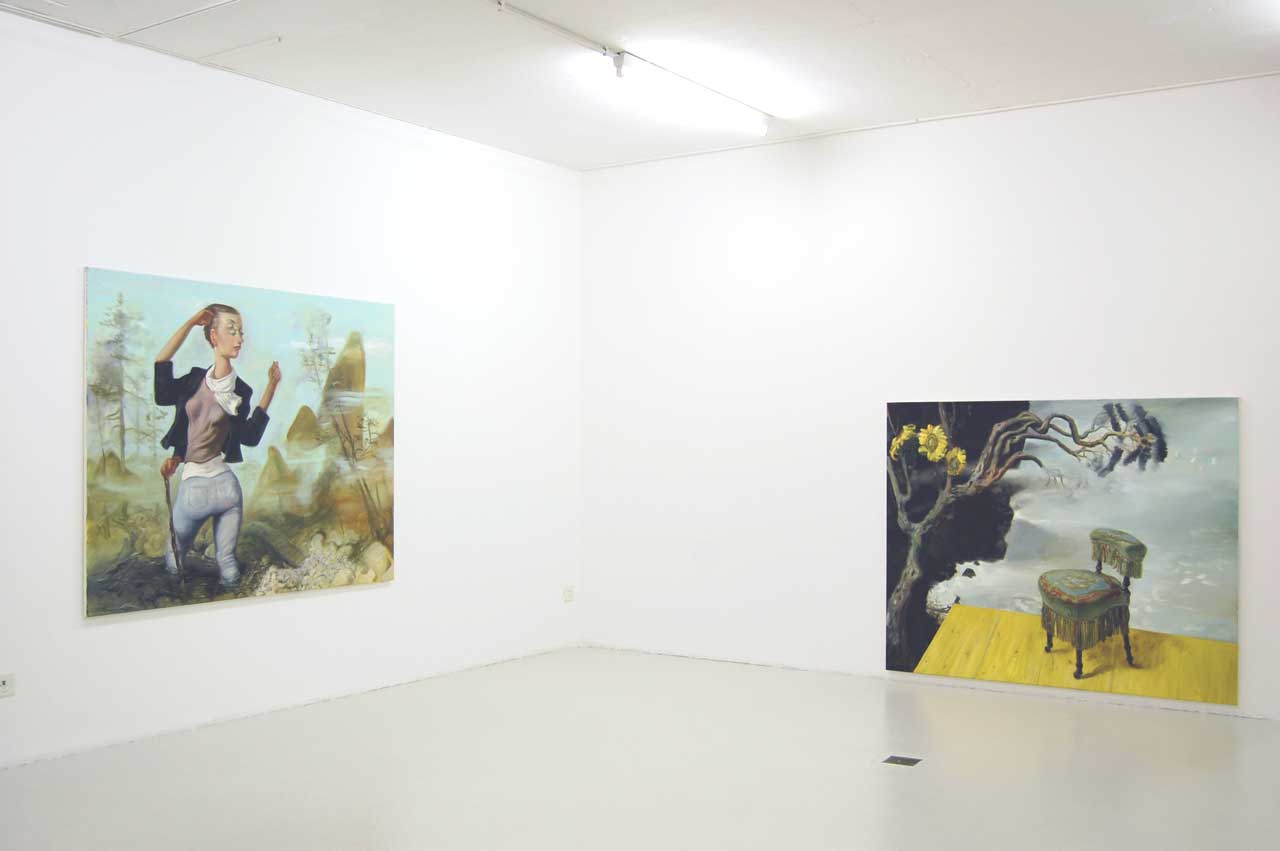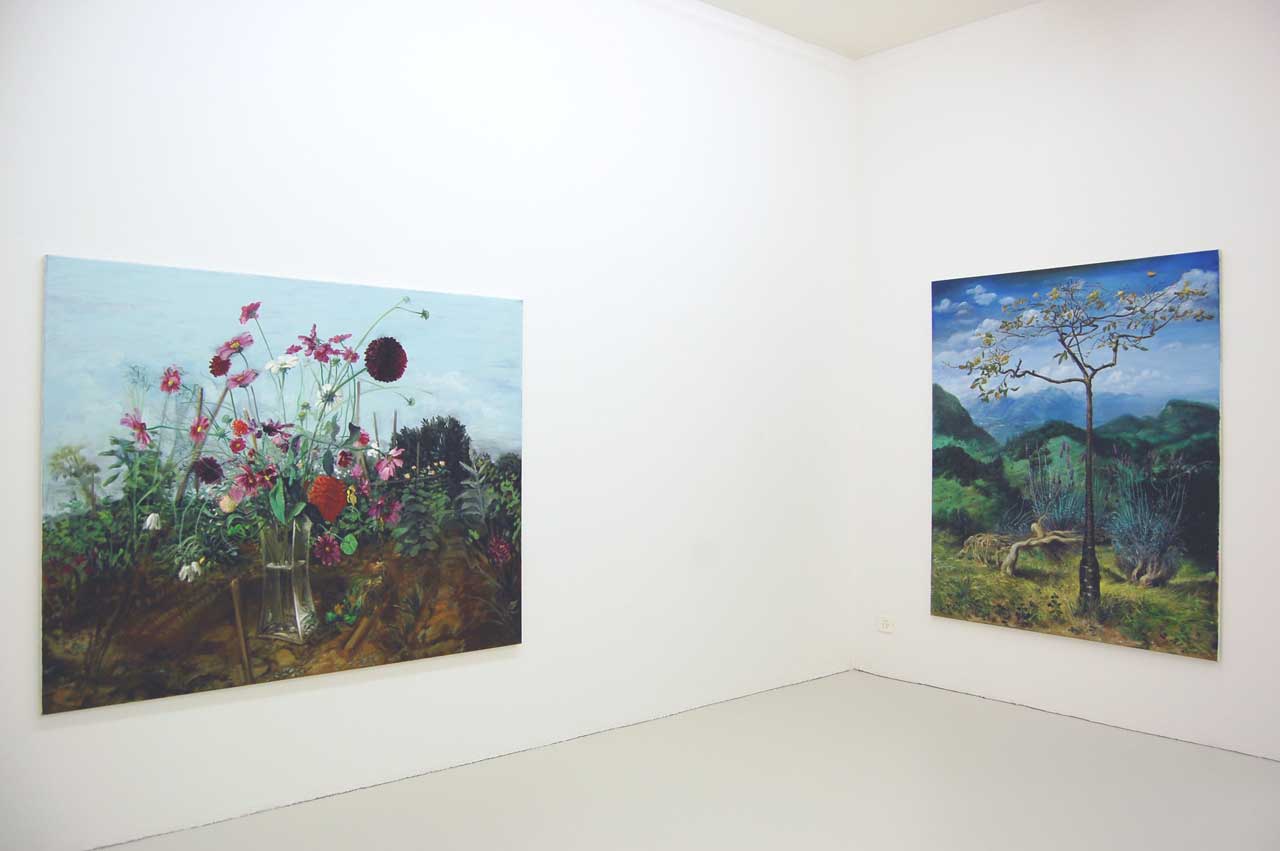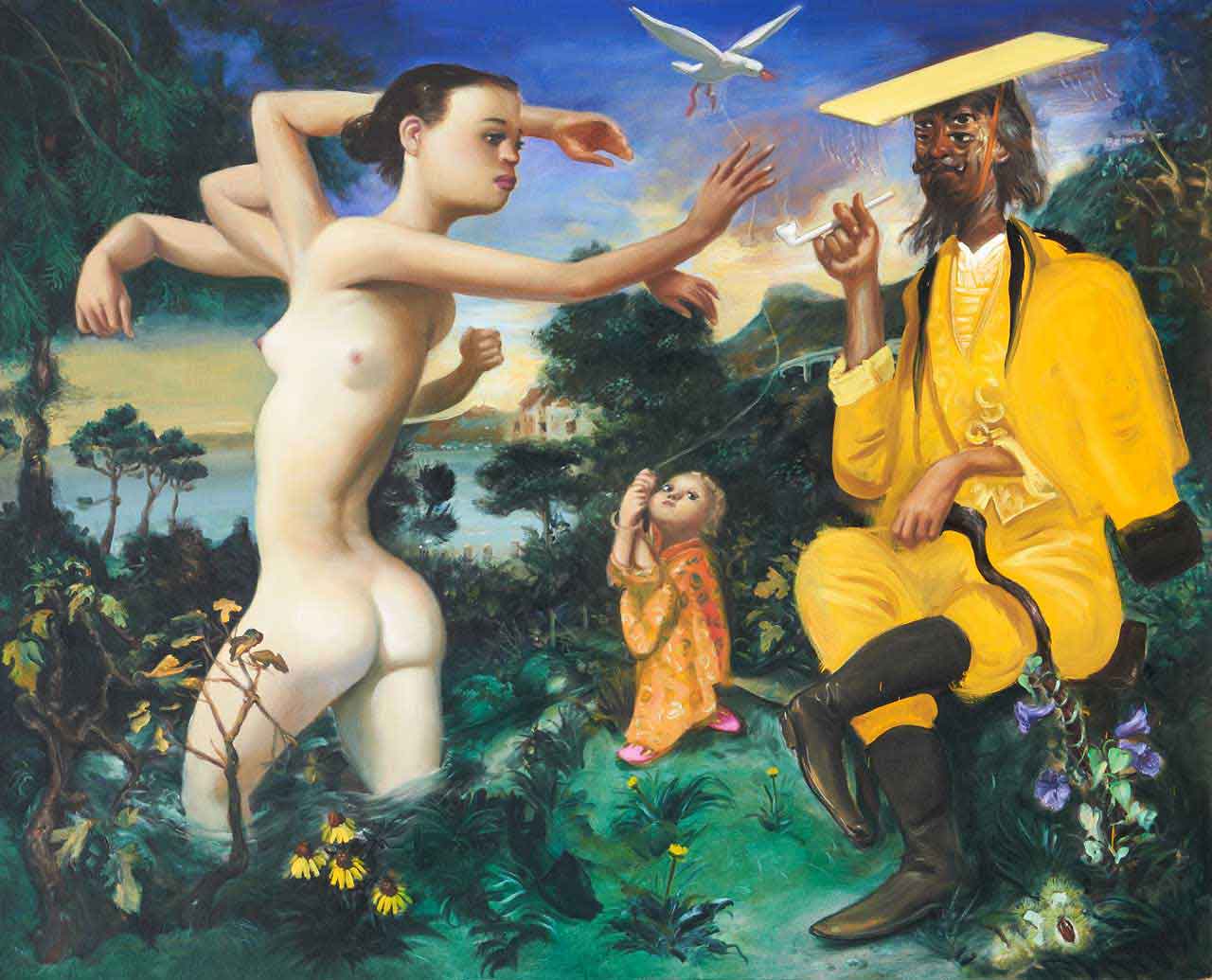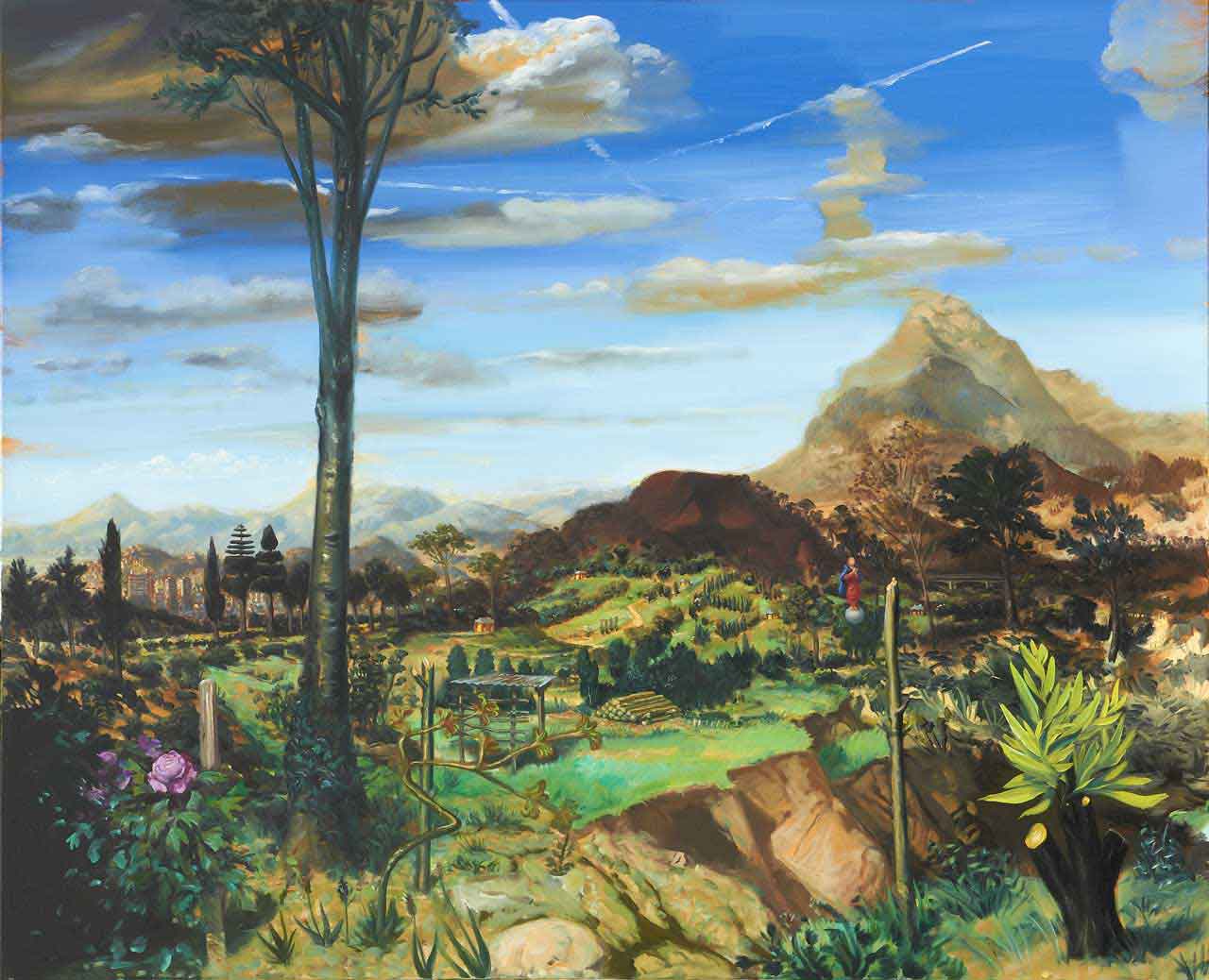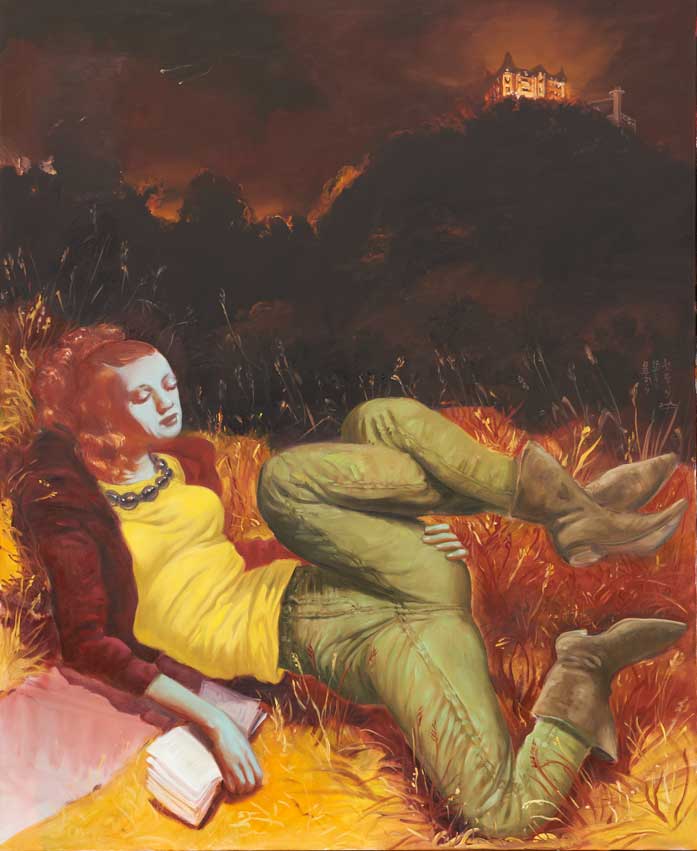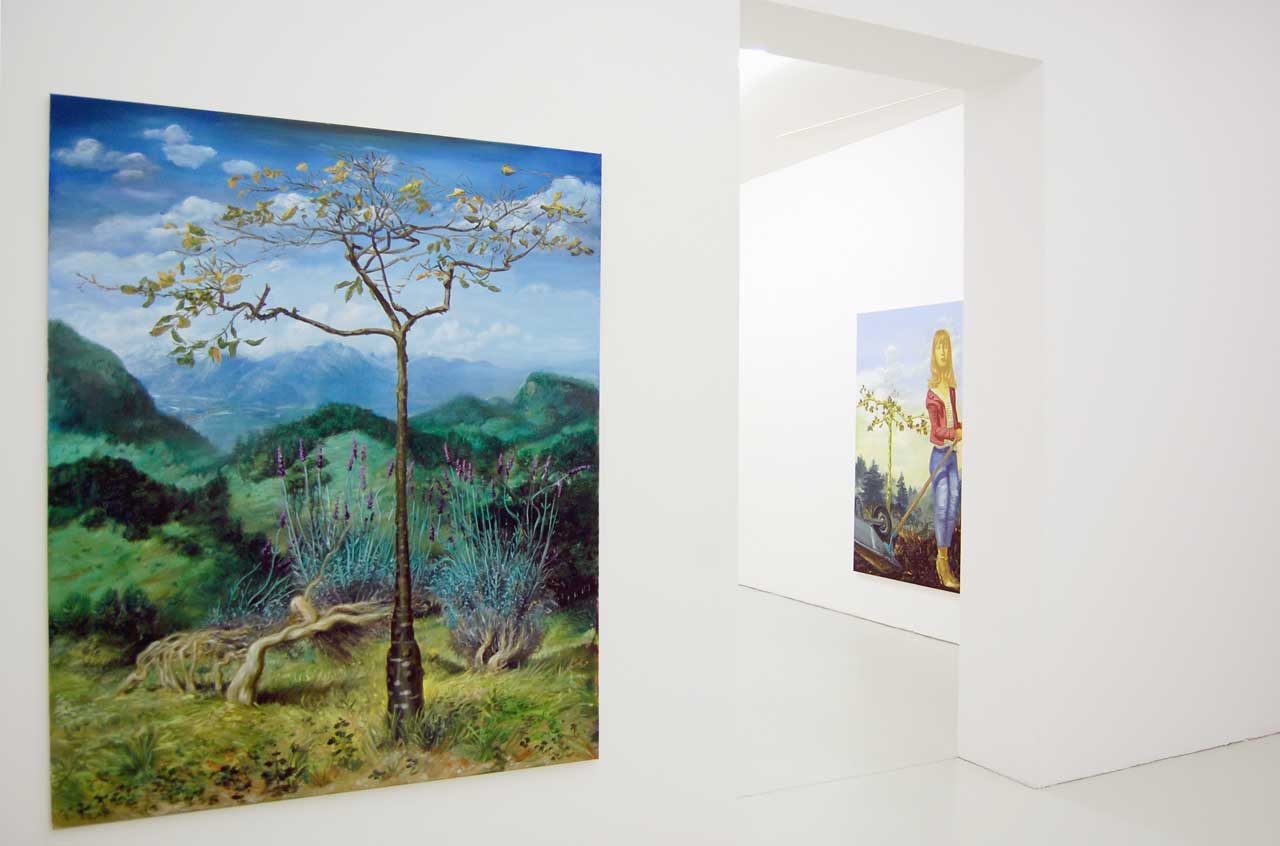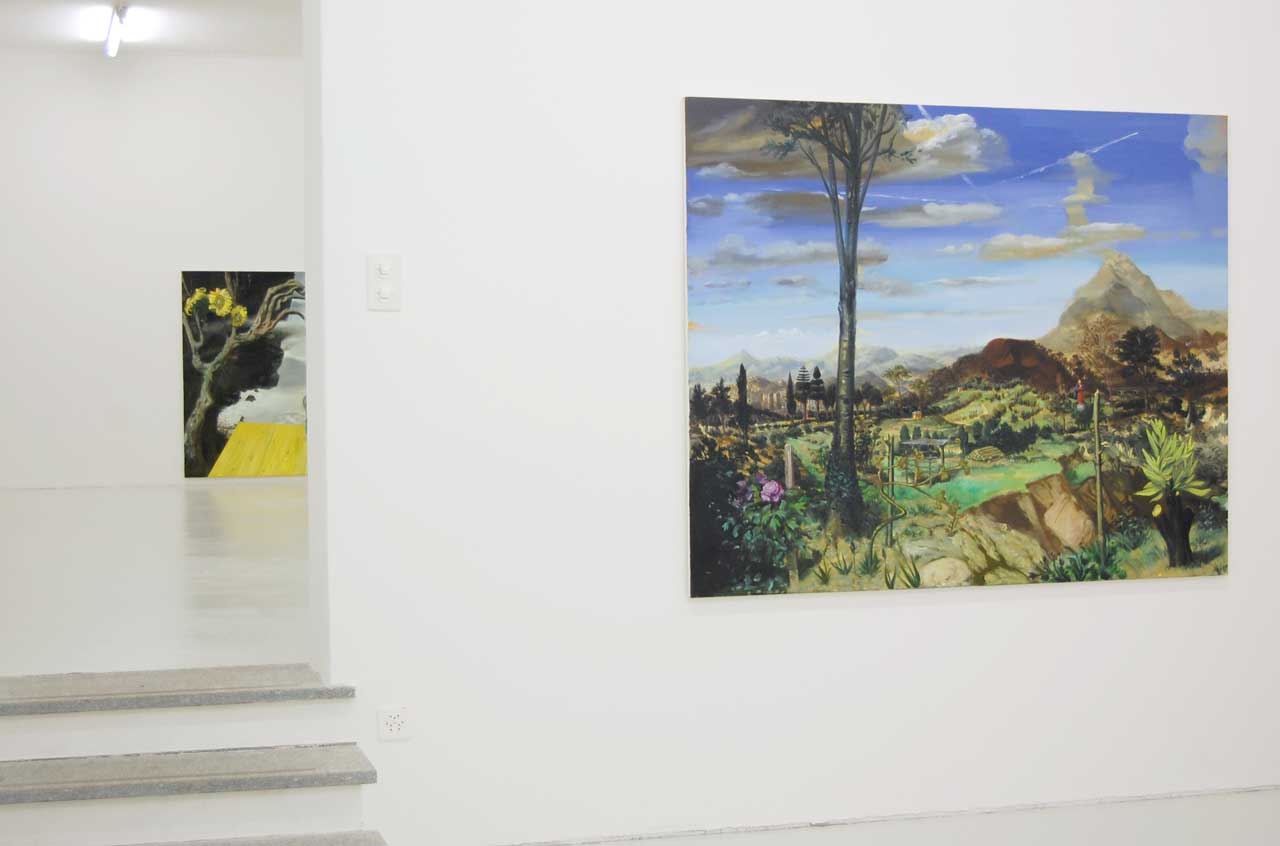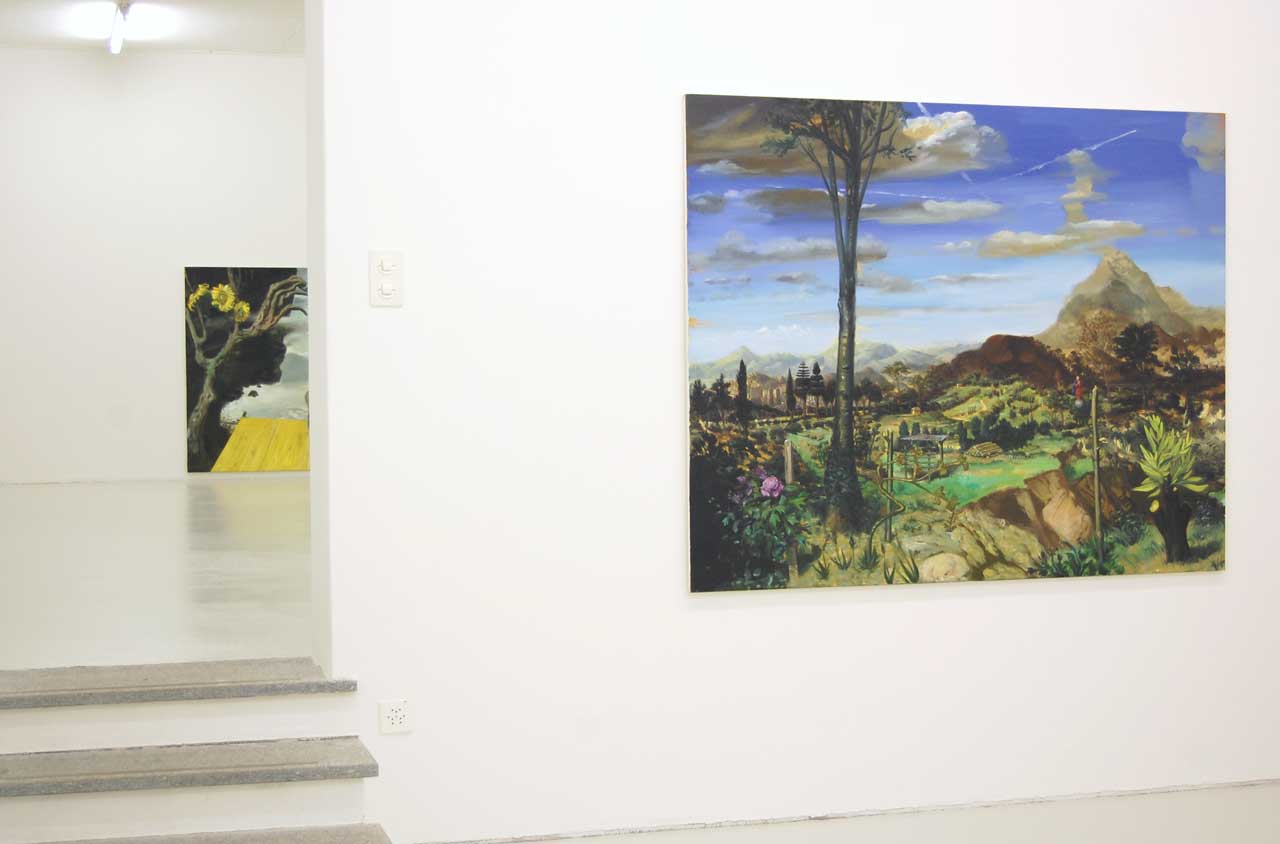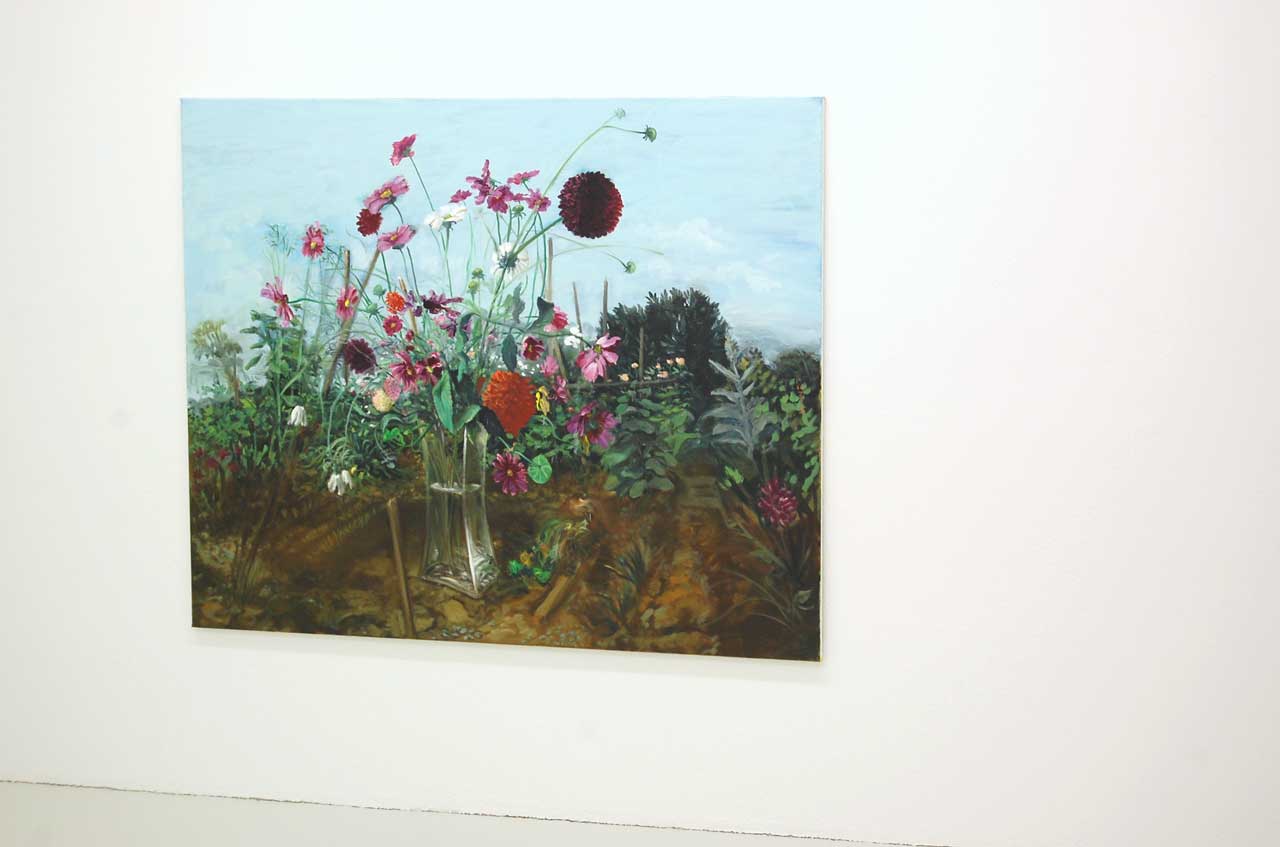Beauty and Deconstruction
Stéphane Zaech
13 September – 9 November 2014
Hard and uncompromising describes this exhibition of paintings by the Swiss artist STÉPHANE ZAECH (1966) entitled BEAUTY AND DECONSTRUCTION. The origins of this artist’s work can be traced to a particular period in time, one of transition from one era, when stylistic choices were underpinned by a strong linguistic idea, to another, in which concepts of transmedia applied to art and to society are becoming more evident and necessary in the move towards emancipation from avant-gardes and ideologies that often bear connotations of an extenuating, repetitive and self-referential coherence, and where a return to forms of academism is latent.
It is a chance of history and of his inner vocation that Stéphane Zaech was born on the very threshold of this difficult but exciting period, when a new alignment first came into being for political, social, economic and financial values.
His art is rooted – in our opinion – in the pure principles of painting, where he develops on a handful of themes, such as portraiture and, in parallel, landscape. The portrait is something of an analysis that the artist makes of his female model, while also lucidly targeting the paradoxes of a priggish society teetering on the brink between social convention and animal vocation. The series of portraits of personalities drawn from the art scene are wonderful as they verge on the caricature, but they also capture the public and private persona very accurately, just as references and linguistic quotations ‘à la manière de’ are often found in his portraiture, in which landscape infallibly provides an exotic backdrop, sometimes setting the temperament and the climate of the work as a whole. This reference to nature’s sheer exoticism echoes certain ideal landscapes whose matrix can be sought in the Renaissance, or later to scenes reproduced in the first travel books, but never actually witnessed by human eye.
What it all boils down to is that these are merely theatrical stage sets, where a grotesque personality seems to pose inside a scene constructed purely and simply for the purpose.
To quote quotationism may also be a post-contemporary quirk, something like the squint on Botticelli’s Venus, an imperfection that enhances beauty, revising and adapting it by calling its criteria into question. We do not know what magic is at work when his output also reminds us of Stravinsky’s polytonal music, whose concept Zaech has apparently adopted as his own.
Mario Casanova, 2014 [translation Pete Kercher]
Ph. Corinne Cuendet and MACT/CACT.
Where
MACT/CACT
Museo e Centro d’Arte Contemporanea Ticino
Via Tamaro 3, Bellinzona.
Opening hours
Friday, Saturday, Sunday
2 p.m. – 6 p.m.

